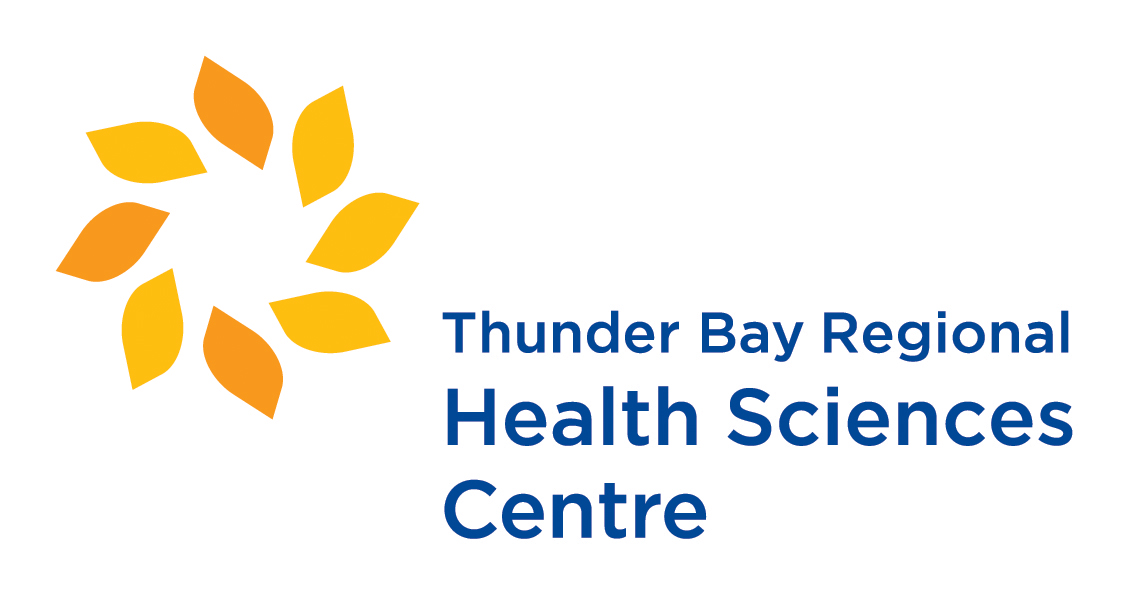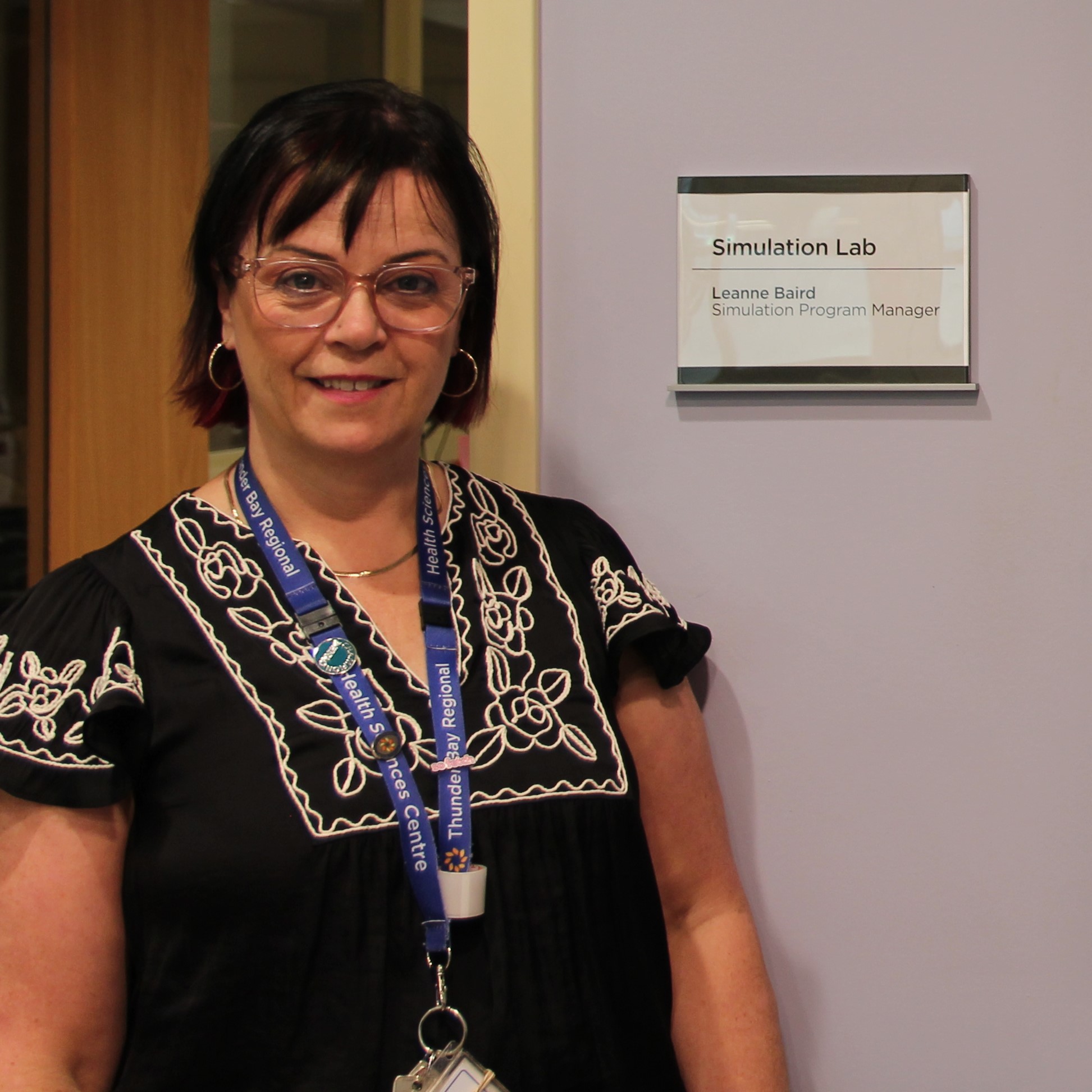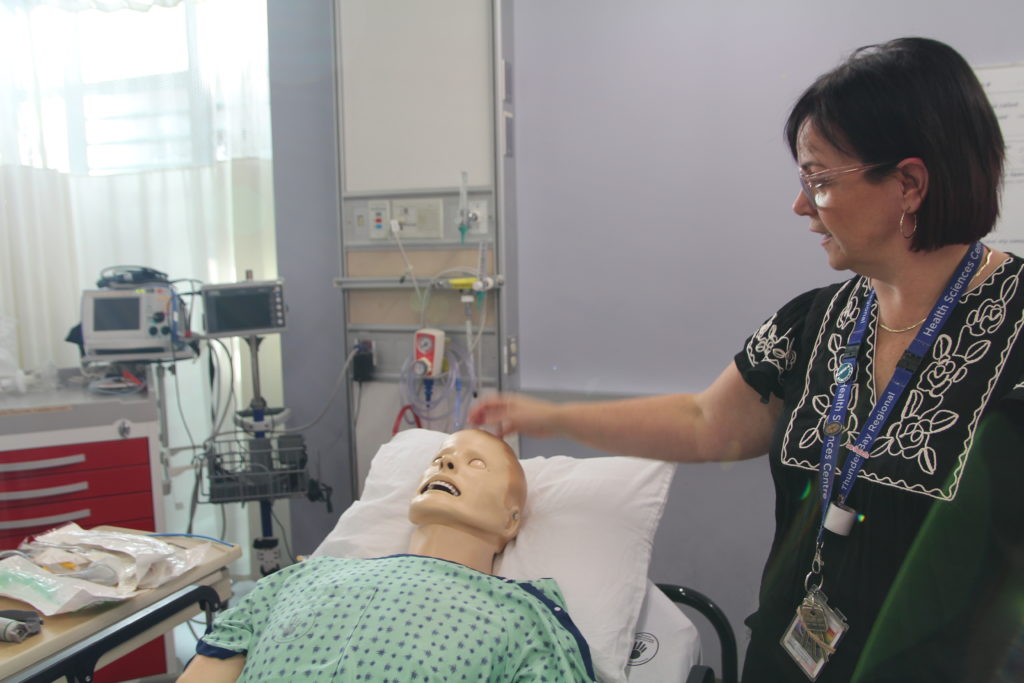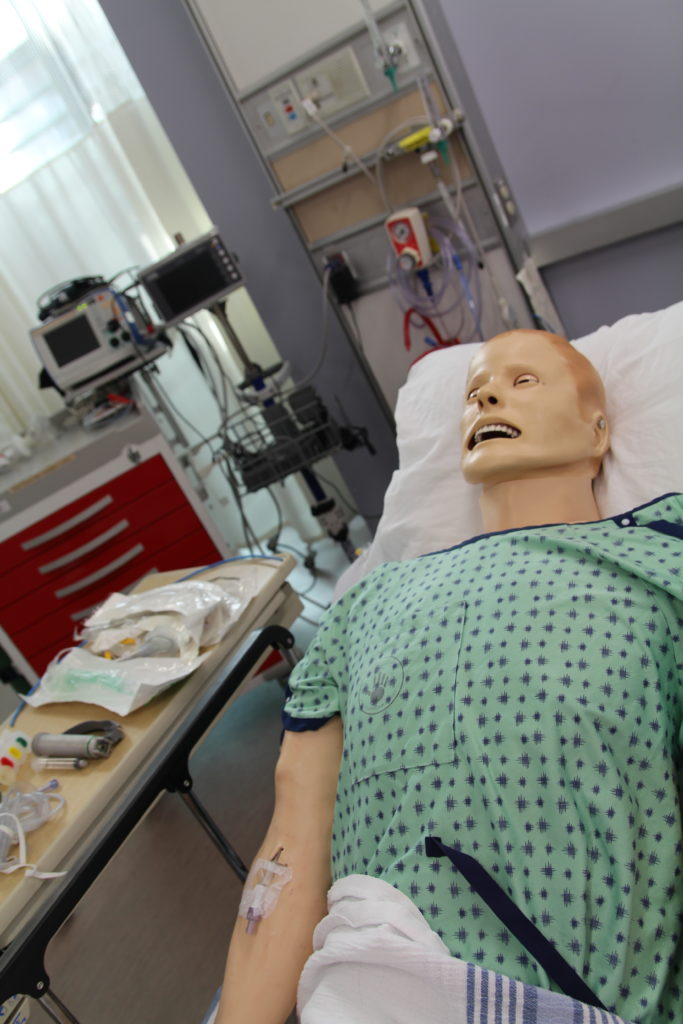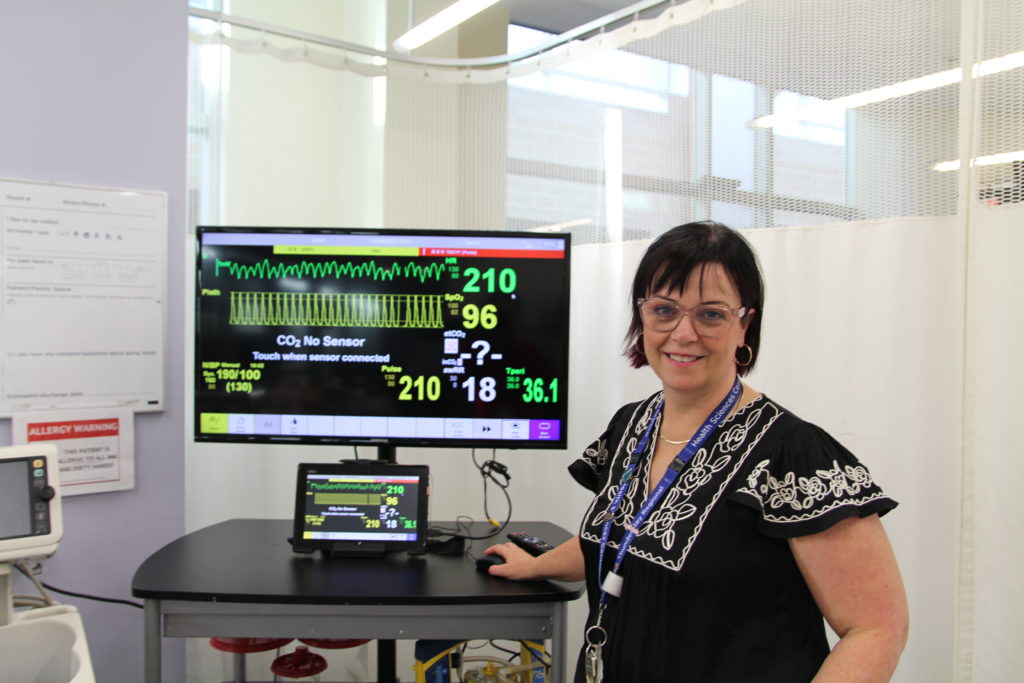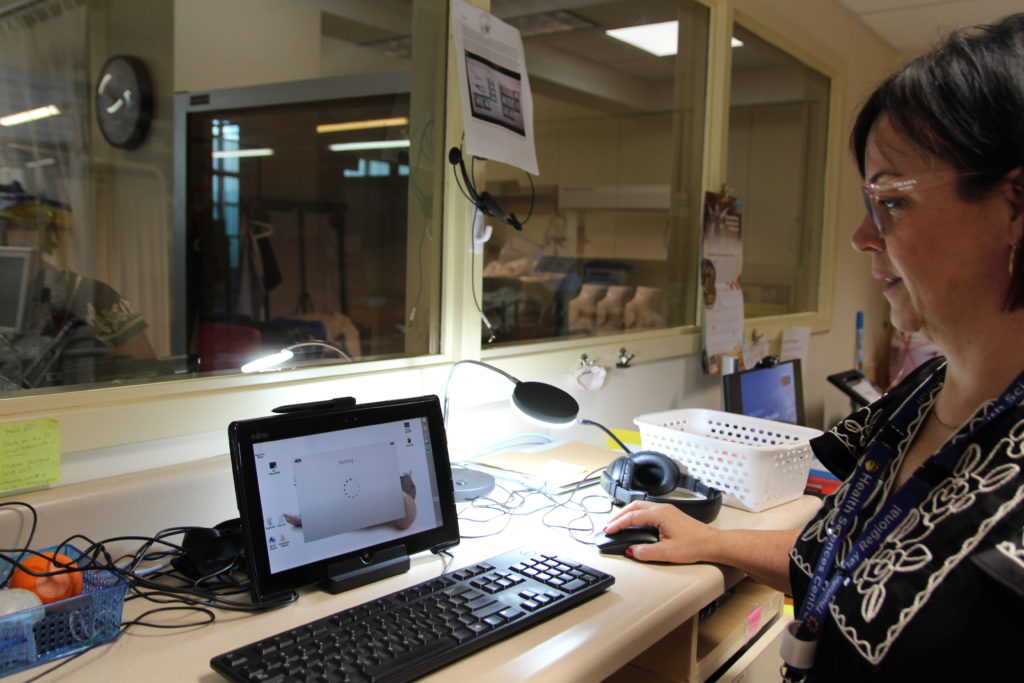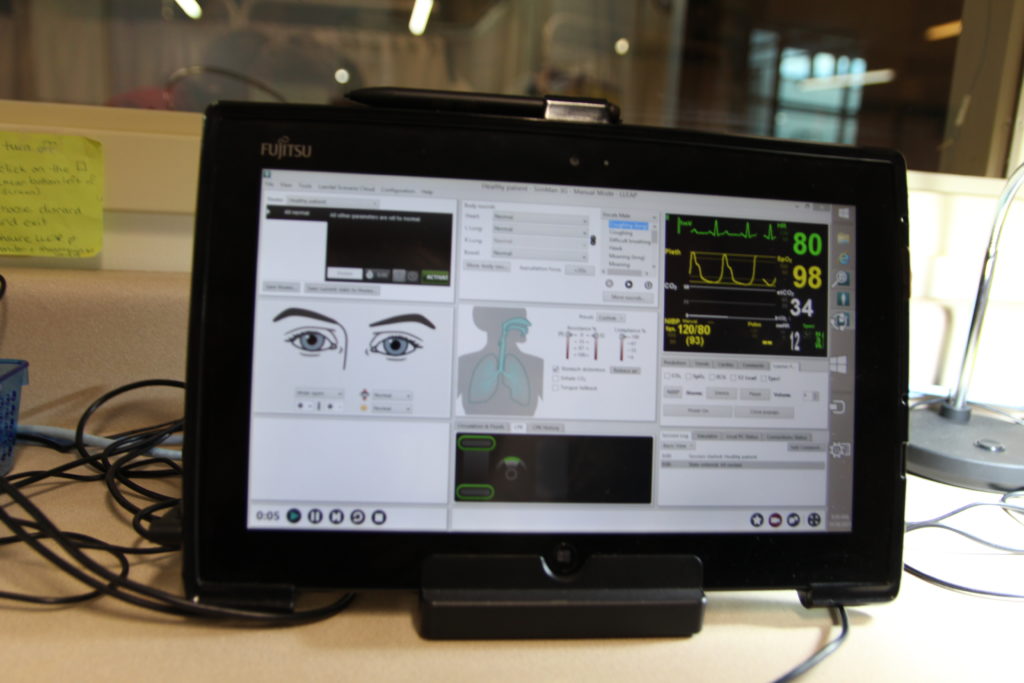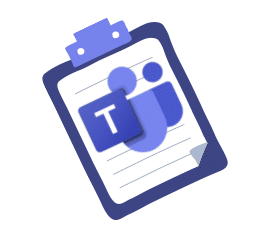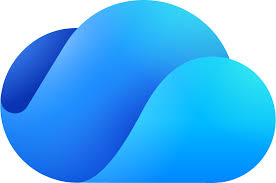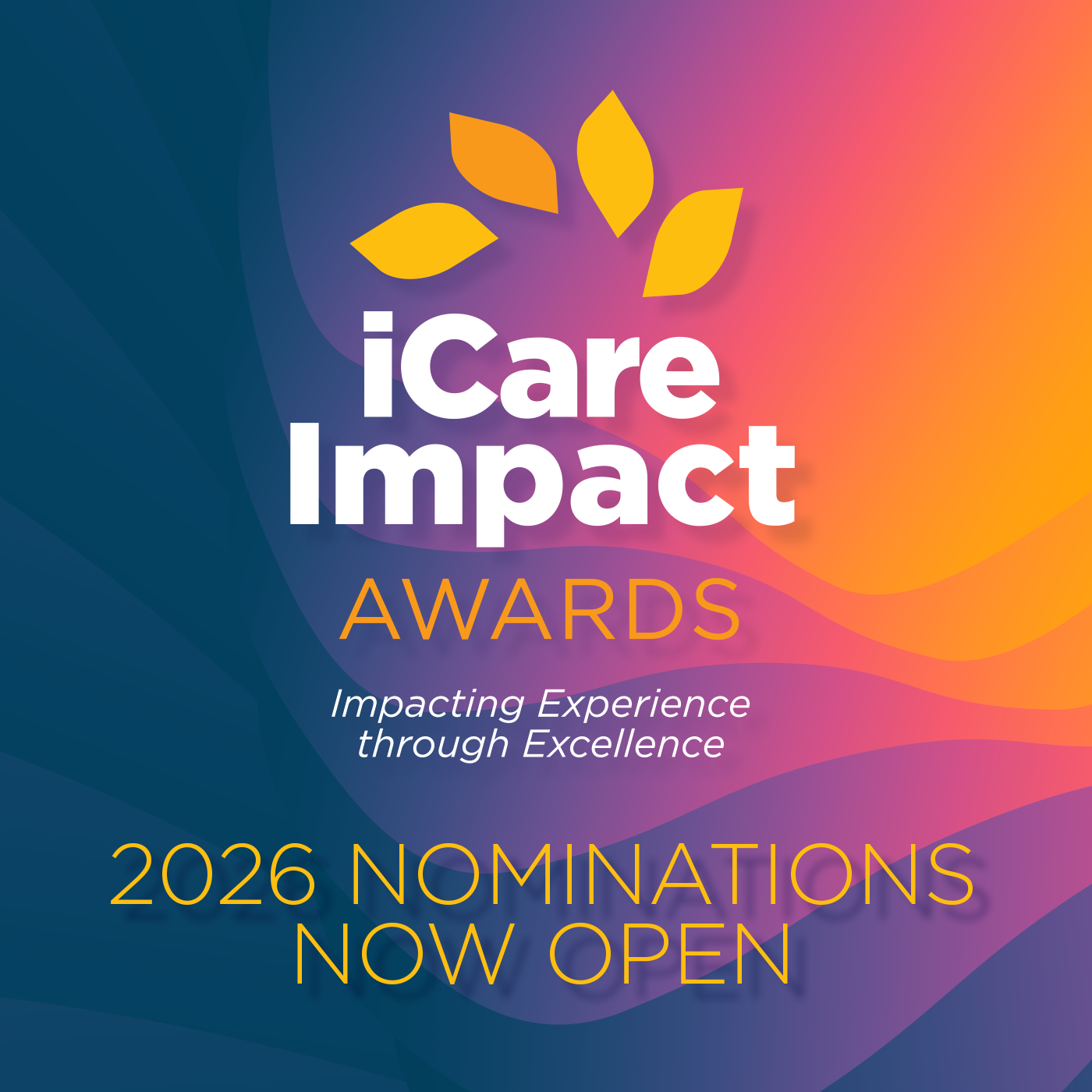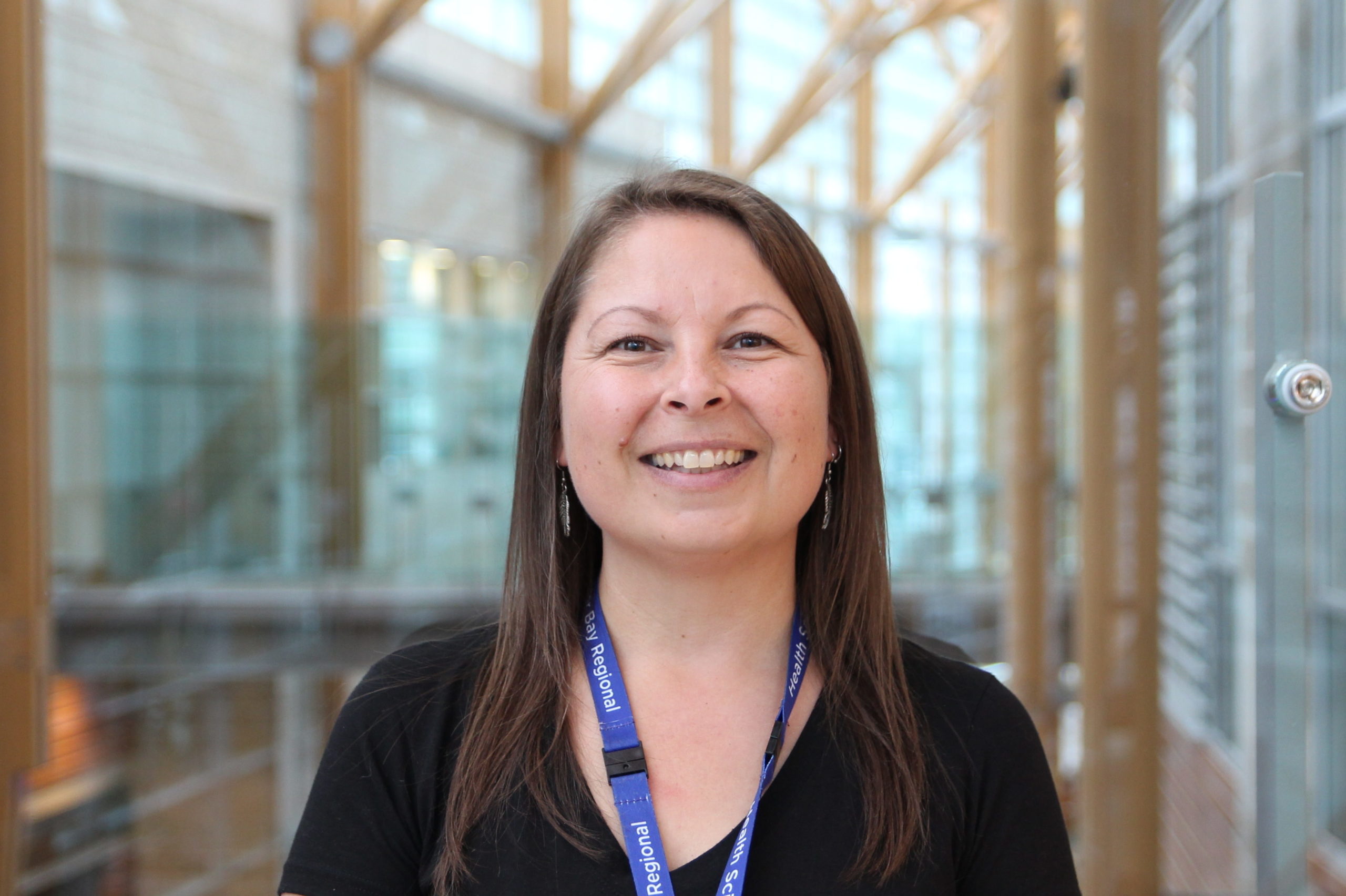If you’ve ever wondered where confidence, competence, and a bit of clinical magic are made, look no further than the Ibn Sina Simulation Lab — the beating heart of hands-on learning at Thunder Bay Regional Health Sciences Centre (TBRHSC). This immersive, high-energy space is where students and clinicians step into realistic scenarios and sharpen their skills in ways that truly bring health care education to life.
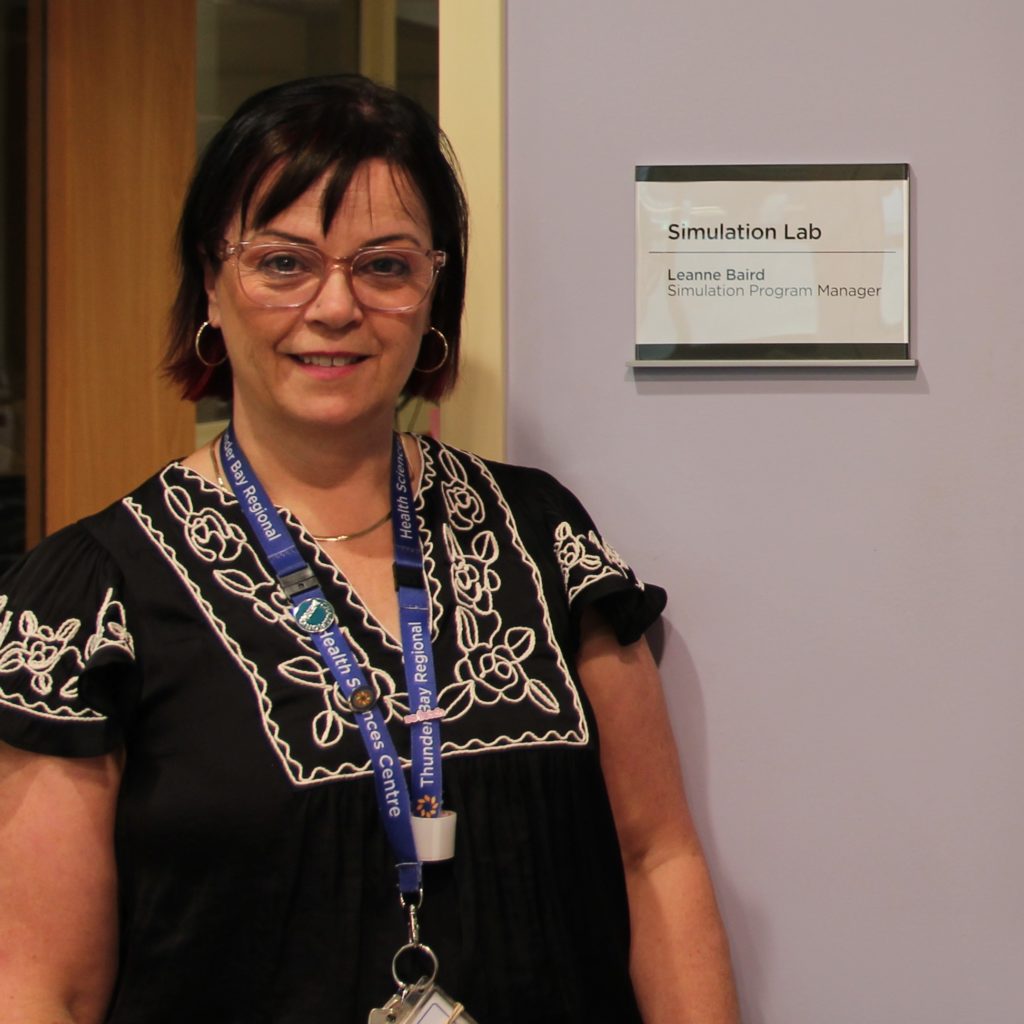
Photo 1: Leanne Baird, Manager of the Ibn Sina Simulation Lab (Sim Lab) invited us in for a closer look at this dynamic space. Her passion for experiential learning and patient-centred training was contagious from the moment she welcomed us in. When asked what she likes about her job, she exclaims “Everything! My job is the best. Let me show you why!”
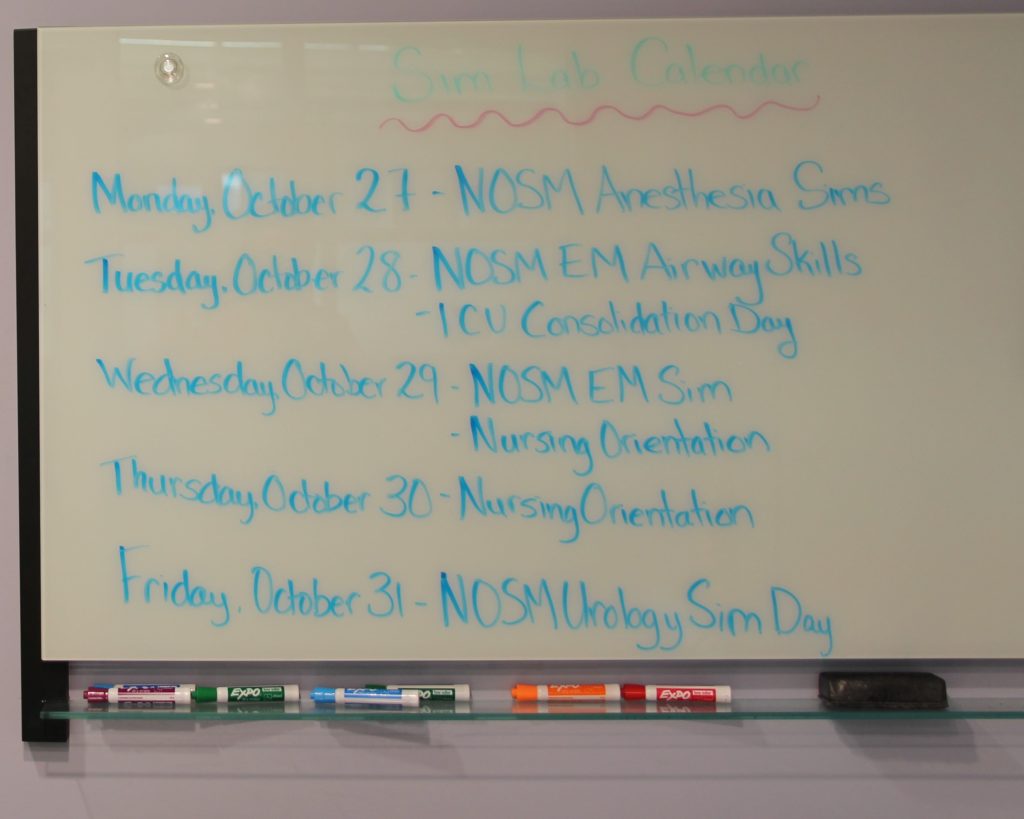
Photo 2: Baird starts by explaining that the Sim Lab is a learning hub for students, clinicians, and allied health care teams. Continuing professional development takes on a new level of excitement when professionals can refresh skills, trial new procedures, or participate in high-energy scenario training. In a field that evolves daily, simulation ensures health care providers stay sharp, confident, and ready for anything. “The Sim Lab is hopping,” smiles Baird. “The schedule changes every week. We are a teaching Hospital, so we have every type of health care learner.” The photo shows an example of a training schedule for the week.
Photos 3, 4, 5: “It’s a high-impact, no risk environment,” shares Baird. “Imagine walking into a room that looks and feels exactly like a real hospital room with monitors beeping, equipment ready, and a patient [a high-fidelity mannequin] that can talk, breathe, bleed, and even give birth. We can set the space up like an operating room, a birthing suite, whatever is necessary for the specific medical skill the instructor is teaching.” This is where learners get to try, fail, try again, and ultimately master essential skills without ever putting a real patient at risk. “It’s hands-on learning at its most dynamic and empowering.”
Photos 6 and 7: From the control room, Leanne controls various aspects of the high-fidelity mannequin, including pupil dilation, chest movement and voice. She demonstrates by speaking through the microphone and the mannequin suddenly comes to life, blinking and talking. The blend of realism, innovation and teamwork, creates a dynamic and exciting learning environment.
Photos 8, 9, 10: Some clinical events happen only a few times in a clinician’s entire career, but when they do, there is no margin for error. The Sim Lab allow teams to rehearse skills that are High Acuity, Low Occurrence (HALO) until they can respond with calm precision. It is all about building muscle memory, confidence, and clinical excellence that directly translates into safer patient care.
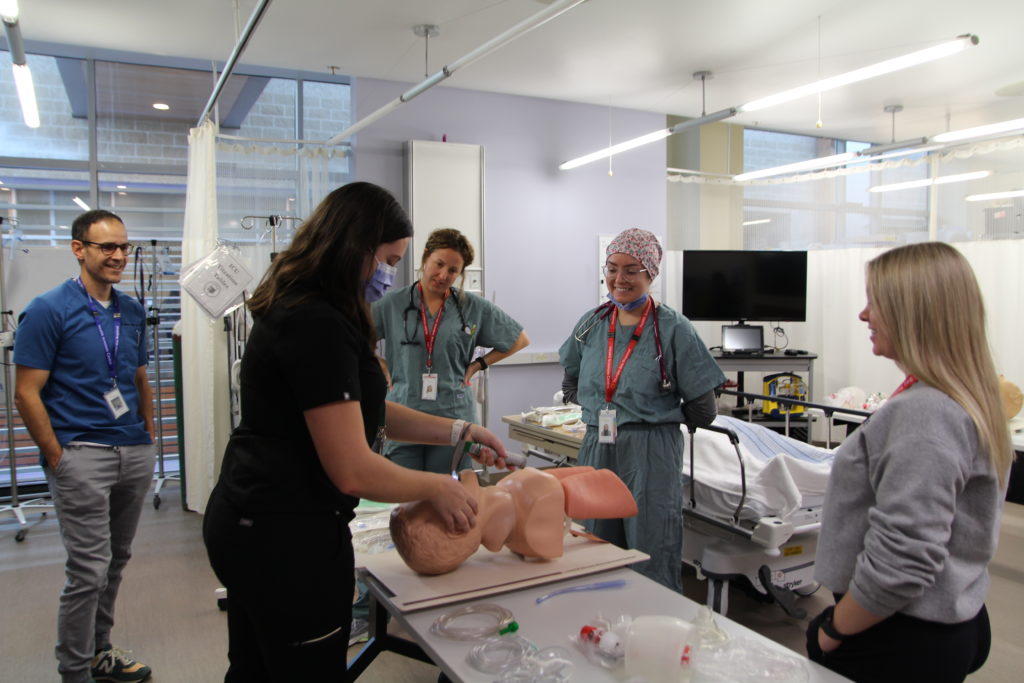
Photo 11: After every scenario, teams come together for structured debriefing, providing a safe, supportive space to reflect, share insights, and refine performance. These conversations are where breakthroughs happen. Learners unpack what went well, what could be improved, and how to elevate their practice. It’s the heartbeat of a culture focused on continuous growth and excellence.
